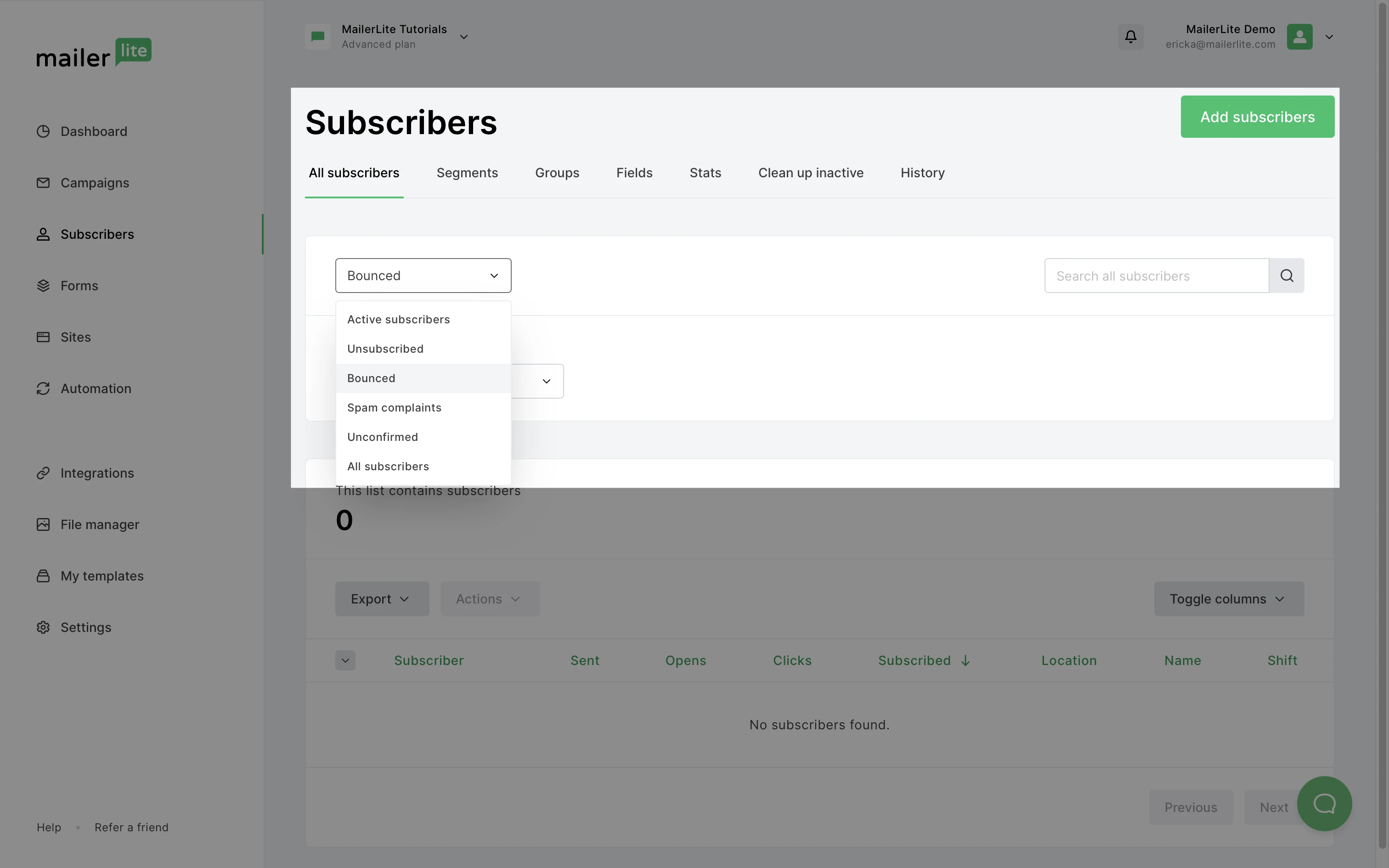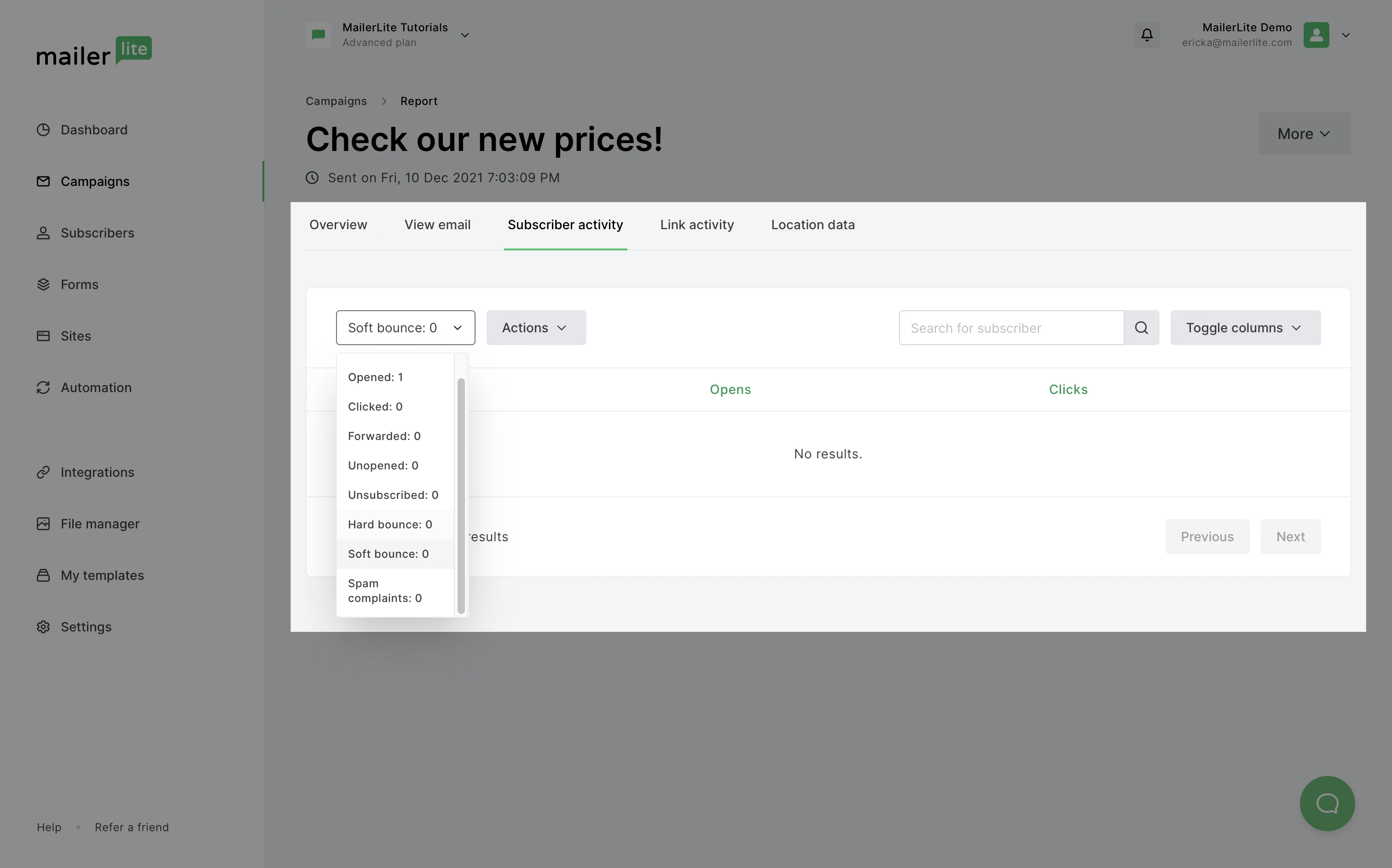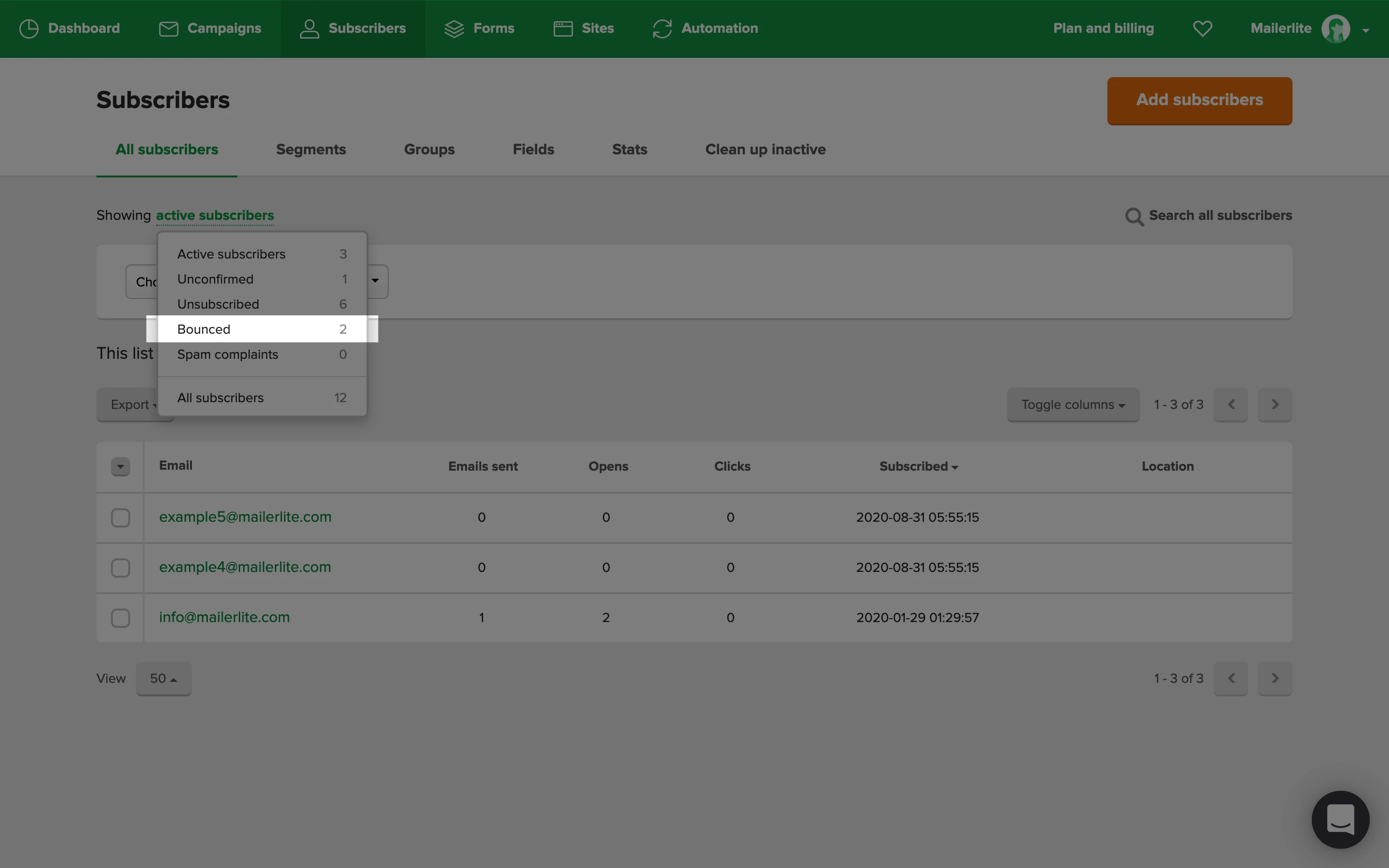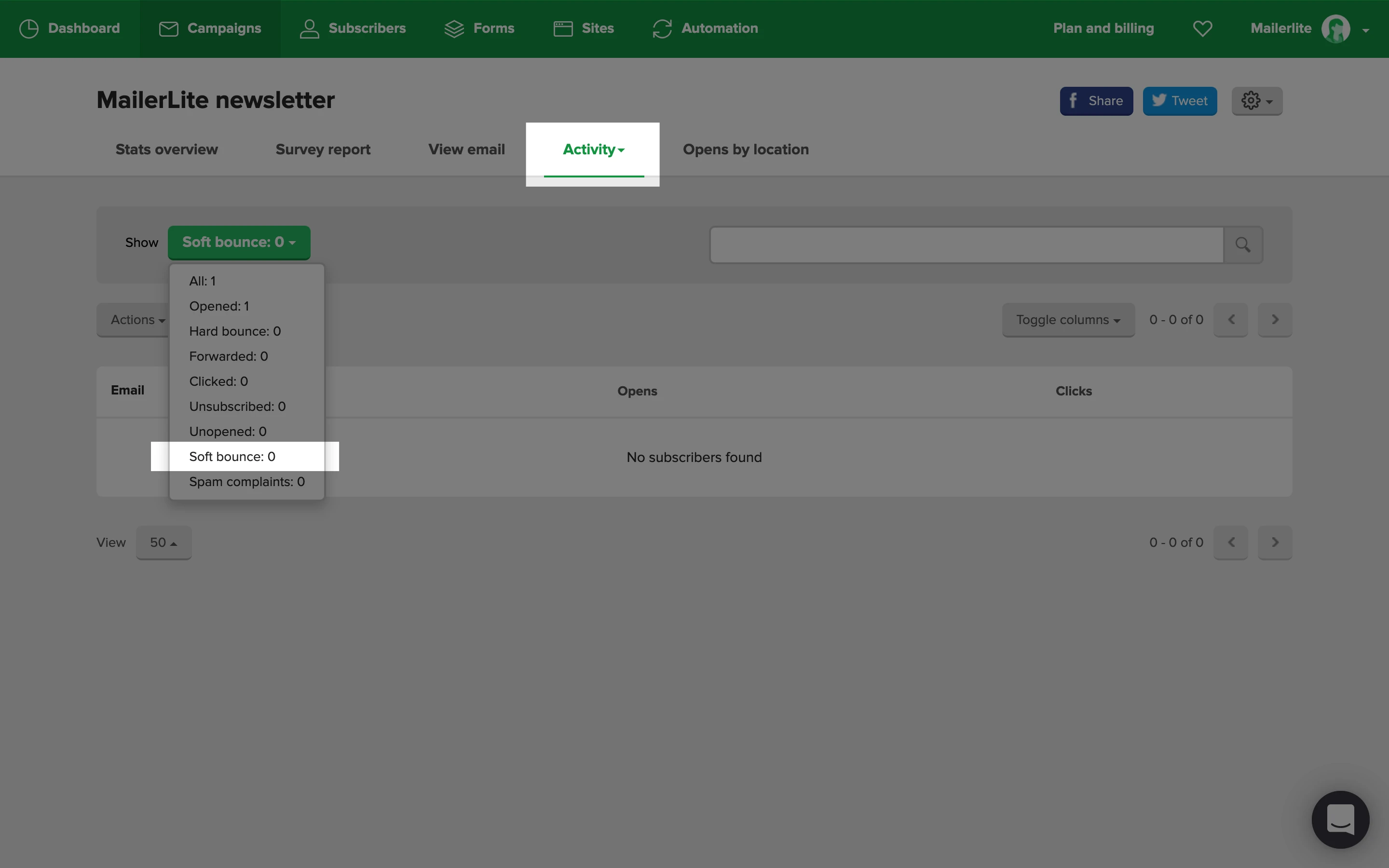When an email bounces, it means the email can't be delivered to a recipient’s inbox; instead, it is bounced back to the sender.
Bounces, especially hard ones, are damaging to your sender reputation. For this reason, we always recommend growing and maintaining a high quality email list.
Bounces are divided into two different types: hard bounce and soft bounce.
What is a hard bounce?
A hard bounce is an email that couldn’t be delivered for a permanent reason. Common reasons an email may hard bounce include:
Fake email address
The email address no longer exists
Invalid email address (check your list for typos or spaces in the email field)
Email blocked by recipient’s server (corporate, government, and institutional domains can have stricter spam filter settings)
While we recommend that all users authenticate their domain, it is particularly important for users with many subscribers belonging to stricter servers, such as corporate email addresses.
Note: If you notice a lot of hard bounces in your first campaign to a new list, you will have to verify the rest of the list with an online email validation tool such as MailerCheck.
Subscribers that hard bounce are automatically removed from your active list to avoid any further damage to your sender reputation. You can find these subscribers on Subscribers page under the All subscribers tab after you choose to display Bounced subscribers.

What is a soft bounce?
A soft bounce is an email that couldn't be delivered because of a temporary reason. Common reasons an email may soft bounce include:
The mailbox is full
The message is too large
The server timed out
Subscribers that soft bounce will remain in your active subscriber list since the bounce reason is temporary. However, if a subscriber soft bounces three times in a row, this will be considered a hard bounce and they will be removed from your active subscribers list.
How to find subscribers who hard or soft bounced in a specific campaign
You can find hard and soft bounces in an individual campaign report by following these steps:
Navigate to the Campaigns page.
Select the Sent tab.
Find the campaign of which you want to view the bounces and click View report.
Select the Subscriber activity tab.
Toggle to view Hard bounce or Soft bounce by clicking the dropdown menu next to All.

Check out our blog for an in-depth understanding of hard and soft bounces.

